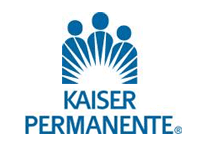Health care costs are skyrocketing across the country, but two proposed ballot initiatives in California are aiming to rein in health care spending, which the Centers for Disease Control estimates at $2.6 trillion annually nationwide. Both measures are currently gathering signatures to be placed on the November ballot.
Service Employees International Union authored the Charitable Hospital Compensation Act (CHCA) and the Fair Healthcare Pricing Act (FHPA), which are designed to directly deal with the high costs at nonprofit hospitals. CHCA seeks to cap the salary for executives at nonprofit hospitals at $450,000 a year, the same salary as the President of the United States. FHPA would limit the amount charged for services to 25 percent above the estimated costs of providing care.
“Health care costs have been out of control for years. These initiatives are two modest things we can do to rein that in. We can make sure that hospitals don’t take ridiculous profits on the materials and services they provide and we can hold pay for executives to a reasonable level” says Assemblymember Tom Ammiano (D-San Francisco), who endorsed both initiatives, “When so many people are struggling to pay for health care, it’s the least we can do.”
Executive pay at nonprofit hospitals is out of control. Former CEO of San Francisco-based Blue Shield of America Bruce Bodaken earned $4.6 million in 2010. Former CEO of Oakland-based Kaiser Permanente George Halvorso earned $6.7 million in the same year.
“Compensation” is strictly defined by the measure, including compensation in the form of bonuses, forgiven loans, and even access to a company car.
“There is some symbolic value to that… people say that running a hospital is like running a hospital is like running a city,” said Dave Regan, president of SEIU-UHW. “You will not find a mayor in America that makes anywhere close to $450,000 a year, let alone $1.5 million. In fact, the person in charge of leading America makes $450,000 a year. We think that [executive] compensation has gotten out of whack.”
The actual costs for services in US hospitals is also out of whack. According to the World Bank, the US spends 17.9 percent of its Gross Domestic Product on healthcare, the most of any country on earth. But, according to the World Health Organization, the US ranks a dismal 37th in quality of healthcare.
US hospitals have grown infamous for overcharging for services and things like aspirin and ibuprofen. On average in California, charging from 325-800 percent above the actual cost for those services and supplies. FHPA is aimed to help the US residents pay less for health care. Its goal is to lower the costs of services at non-profit hospitals by capping the amount charged for services to 25 percent above the estimated costs of providing care.
“Cost includes the salary of doctors, nurses and other caregiver… supplies, all of that… You take those costs and add 25 percent. That seems to us, a very healthy and large operating margin,” Regan said. “This will prevent the worst abuses by the most aggressive hospital providers in the state. Everyone knows hospital care costs too much, nobody knows what they’re going to get charged before they see bills… We believe this [FHPA] will reduce what patients are paying… and the hospital industry will be perfectly healthy.”
Both initiatives are also designed to increase transparency by forcing nonprofit hospitals to disclose their 10 highest paid executives and five ex-executives with the highest paid severance package, along with a detailed breakdown of the compensation or severance package, on a yearly bases.
They also have teeth. Penalties for violating any of conditions set forth in the initiatives can trigger fines of up to $100,000. Even with these blaring facts, the hospital industry is expected to fight the health care measures to the bitter end. SEIU has already fired shot by releasing an ad. But the hospital industry is predicted to dump millions into this battle to keep the status quo.
Both the California Hospital Association and the Hospital Council of Northern and Central California declined to comment on the initiatives. But a public relations officer from CHA told the Guardian that the hospital industry and SEIU are looking for a “non-initiative solution.”
However, critics of the initiatives have banded together to fight the pair of healthcare reforms. A CHA-funded group call itself Californians Against Initiative Abuse released an ad accusing the initiatives of being a ploy to increase SEIU’s power . Calling the initiates, “deceptive, dangerous and dishonest.”
Literature on the group’s website spells out healthcare domesday if the initiatives are approved in November, including layoffs, reduced services, and hospital closures — and a decrease of hundreds of millions of dollars in Medi-Cal funding, handing back what it claims is $1 billion in funds to the federal government.
Whatever the outcome of the November ballot, the consequences of keeping the current trend of health care costs are catastrophic.
“Without reasonable health care reform, there are estimates that the health care costs can reach 30 percent of GDP in the future.” California Sen. Mark Leno told the Guardian, “This is not sustainable. We have to get a handle on this.”
Both Kaiser and Blue Shield declined to comment.

